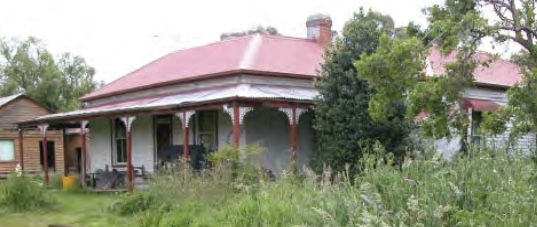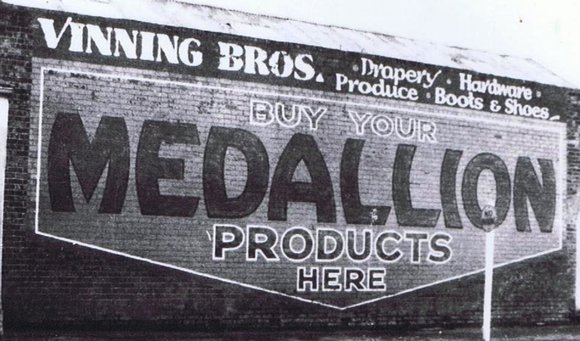Looking Back - Yinnar remains a centre of attraction - Part 2
By Leo Billington
Yinnar could easily have been our main town instead of Morwell. More about that later.

In this story, the second in the Yinnar series, we recall a series of Victorian government land acts. The Victorian Parliament passed Land Acts in 1860, 1862 and 1869, which offered settlers land within defined agricultural areas. Settlers paid for half of an allotment on selection at a uniform price of £1 per acre, and paid rent on the other half for usually seven years.
Former squatting runs were thrown open for selection. In the case of Yinnar, selectors began arriving in 1865, as a result of squatting runs being divided for sale. Two decades later, the railway line that was under construction provided further inducement to select in the area and a Lands Office was opened in Traralgon. One of these runs, Scrubby Forest holds a significant place in Yinnar’s history.
George Firmin was allocated land in about 1882 and Henry Wicks around 1885. They were early Yinnar selectors taking up land abutting the Morwell River and Billys Creek. There were other families around this time but these two held quite large land holdings.
It was several years later that part of George’s selection, the north west corner of Scrubby Forest, was granted to other selectors keen to pursue a livelihood in agriculture.
The focus at this stage is John Quigley. At Yinnar, he and his wife, Bridget, were fortunate to obtain land grants in around the mid-1880’s bordering Middle Creek. More land was obtained a few years later in 1909 abutting Billys Creek. About this time also, John and Bridget obtained land grants in the north west corner of Scrubby Forest.
John and Bridget Quigley, around 1877, travelled by bullock dray, with their herd of dairy cattle, across Victoria, from the Ballarat area to Morwell Bridge.
John’s entrepreneurial spirit kicked in with building a hostelry - an inn and pub combination. A more practical location on higher ground was deemed necessary. Consequently, what is described as a “slab building” was constructed on a corner block near or at today’s Tarwin Street and Commercial Road. His building was used as a hotel, general store and butchers shop. His fierce business rival was Edmund Kelleher, who was investing borrowed money in a large, more modern hotel.
Around 1880, John sold his business to Kelleher and relocated to Yinnar. Initially he took up farming and about 1900, a land grant in the north west corner of Scrubby Forest (northern end of town) became a location for his next venture - drapery, general store, butchers shop and, naturally, a hostelry.
Basically, Yinnar’s commercial life was started by John. John died in late May, 1908, and Bridget in June 1930.
There is little doubt that John’s business acumen was second to none. In May 1890, during what was known as The Great Liquor Case, he was accused of selling “beer under cover of night.” Telling a crowded court in Yinnar’s Mechanics Institute hall, John, stood straight, without any guilt, said, “the beer was a tonic.” Case dismissed.
Henry Wicks also expanded Yinnar’s business sector by building and owning the Yinnar Hotel. Unfortunately it was destroyed in a fire, but later rebuilt on its present site. George Firmin, aside from farming, devoted his energy to volunteer community work while three of his daughters, Jessie, Annie, Lizzie (Elizabeth) established their own business in Yinnar’s Main Street. Known locally as the three Firmin sisters, Lizzie and Jessie (Annie joined them after returning from overseas) first opened their grocery store on February 4, 1927.
The Purvis Yinnar store was founded in the mid-thirties when Jack Purvis rented a shop from the three Firmin sisters. The shop had a house attached and was situated in Yinnar’s Main Street. ]

By this stage, a co-operative butter factory was sited in Creamery Road. A larger, more permanent Yinnar and District Butter Factory, was built in 1929 in Main Street. As mentioned, Yinnar’s first wine saloon was built by John Quigley in the 1880s. Later on, it was run by Mr R Taylor as a wine cafe and billiard saloon and was known as the Railway Coffee Palace. It succumbed to a fire on February 26, 1910. It is recorded that Bridget Quigley had kept up insurance payments so Mr Taylor’s stock losses were adequately covered.
Nonetheless, those wishing to quench their ample thirsts still had the pub. Meanwhile, as an alternative, Mrs W T Bolger started up the coffee palace with her advertisement in the Morwell Advertiser, Friday February 26, 1915.
Yinnar’s railway station quickly provided a vital link to the main Melbourne line via Morwell. In the Churchill & District News, October 2023, it was explained excited discussions at government levels touted a railway line from Yinnar to Boolarra and then onwards through Budgeree and south to wherever. There are records of locals meeting in the Ryton Hall lobbying for the railway. It was intended to have an Agricultural College established near English’s Corner, but talk was cheap.

To meet a burgeoning demand for retailers, John Hall opened up, extending his reach from a well-established base in Morwell; James Pennycuick conducted a general store, as did the Firmin Sisters and then Purvis Stores for a short while. Mrs M M Long had her own successful dressmaking and millinery business. John Moore had a general store, Mr D Taylor sold boots and harness.
Burnside, Reid and Company advertised themselves as general merchants, being associated with James Pennycuick. George Purcell was a well-respected contractor carting cream to Yinnar from Jumbuck. Vinning Brothers Yinnar General Store celebrated its’ 100th anniversary in December 2012.
We remember the well-known Yinnar stalwart, Bill Welsh and his elder brother, Alwyn, who owned and ran their Yinnar Farm & Hardware for 37 years.
There were several sawmills such as Grant’s Mill, Walter Edney’s Yinnar Saw Mill, and Henry Collins who specialised in “cutting first class pointed pickets.” To recall William Turner and his descendants, the Benson family. He was basically Morwell’s main builder in those early years, sourcing timber from sawmillers who had established themselves in the immediate Yinnar area.
As explained in the Churchill & District News, December, 2023, Rob Benson and family have returned albeit via a circuitous historical route, to shine a spotlight on Yinnar. Let us be positive that Yinnar will make its presence felt in central Gippsland.
There is plenty to write about, but newspaper space is limited. Yinnar’s growth has not passed unnoticed.


